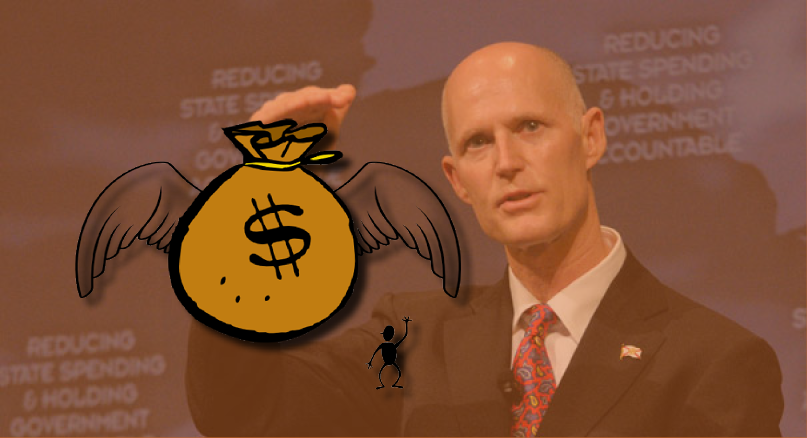 Governor Rick Scott’s budget proposal for the 2016-17 fiscal year is notable for one stark fact: It proposes spending more than twice as much money from general revenue growth on tax cuts than on increasing funding for vital state services.
Governor Rick Scott’s budget proposal for the 2016-17 fiscal year is notable for one stark fact: It proposes spending more than twice as much money from general revenue growth on tax cuts than on increasing funding for vital state services.
Of the state’s more than $1.3 billion increase in general revenue from the current fiscal year to 2016-17, Scott proposes to use more than $1 billion of it on tax cuts – $920.1 million of it in permanent recurring general revenues. He would use just $390 million on net new general revenue appropriations for education, health care, mental health, corrections, child welfare and all other areas funded by general revenue combined.
General revenue will grow 4.7 percent from 2015-16 to 2016-17, while the Governor’s budget would increase general revenue appropriations by just 1.35 percent.
To be sure, the Governor’s budget would increase general revenue expenditures in some areas of state government. But most of the increases are offset by reductions elsewhere through cuts to state services that have already experienced cuts in previous years.
His spending plan fails to fund the level of services already provided through state general revenue dollars. Scott would spend $29.3 billion in total general revenue—permanent recurring dollars plus one-time nonrecurring money—while at least $30.9 billion is necessary to fund state operations under current law, state economists say.
CLICK HERE: To read the full report by the Florida Center for Fiscal and Economic Policy.

